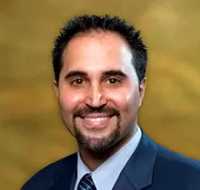ASCO, Author Interviews, Cancer Research, Cost of Health Care, End of Life Care / 17.09.2019
End of Life Cancer Care: Lay Health Workers Improved Quality of Life and Reduced Costs
MedicalResearch.com Interview with:
 Richy Agajanian, M.D.
Chief Medical Officer and Senior Regional Director
The Oncology Institute of Hope and Innovation
MedicalResearch.com: What is the background for this study?
Response: Cancer patients and their families face status-quo treatment protocols and reimbursement models which often result in confusion and unnecessary pain and suffering in the final weeks or months of life while also causing enormous financial burden.
To help combat these issues, The Oncology Institute, in collaboration with the Stanford University School of Medicine and CareMore Health, released the study, Enhancing community capacity to deliver value-based cancer care at the end-of-life.
This study evaluated the effect of using lay health workers (LHWs), who are non-physician members of the community who have received specialized training to support patient care and navigation, on end-of-life cancer care outcomes, quality and cost. (more…)
Richy Agajanian, M.D.
Chief Medical Officer and Senior Regional Director
The Oncology Institute of Hope and Innovation
MedicalResearch.com: What is the background for this study?
Response: Cancer patients and their families face status-quo treatment protocols and reimbursement models which often result in confusion and unnecessary pain and suffering in the final weeks or months of life while also causing enormous financial burden.
To help combat these issues, The Oncology Institute, in collaboration with the Stanford University School of Medicine and CareMore Health, released the study, Enhancing community capacity to deliver value-based cancer care at the end-of-life.
This study evaluated the effect of using lay health workers (LHWs), who are non-physician members of the community who have received specialized training to support patient care and navigation, on end-of-life cancer care outcomes, quality and cost. (more…)
 Richy Agajanian, M.D.
Chief Medical Officer and Senior Regional Director
The Oncology Institute of Hope and Innovation
MedicalResearch.com: What is the background for this study?
Response: Cancer patients and their families face status-quo treatment protocols and reimbursement models which often result in confusion and unnecessary pain and suffering in the final weeks or months of life while also causing enormous financial burden.
To help combat these issues, The Oncology Institute, in collaboration with the Stanford University School of Medicine and CareMore Health, released the study, Enhancing community capacity to deliver value-based cancer care at the end-of-life.
This study evaluated the effect of using lay health workers (LHWs), who are non-physician members of the community who have received specialized training to support patient care and navigation, on end-of-life cancer care outcomes, quality and cost. (more…)
Richy Agajanian, M.D.
Chief Medical Officer and Senior Regional Director
The Oncology Institute of Hope and Innovation
MedicalResearch.com: What is the background for this study?
Response: Cancer patients and their families face status-quo treatment protocols and reimbursement models which often result in confusion and unnecessary pain and suffering in the final weeks or months of life while also causing enormous financial burden.
To help combat these issues, The Oncology Institute, in collaboration with the Stanford University School of Medicine and CareMore Health, released the study, Enhancing community capacity to deliver value-based cancer care at the end-of-life.
This study evaluated the effect of using lay health workers (LHWs), who are non-physician members of the community who have received specialized training to support patient care and navigation, on end-of-life cancer care outcomes, quality and cost. (more…)


